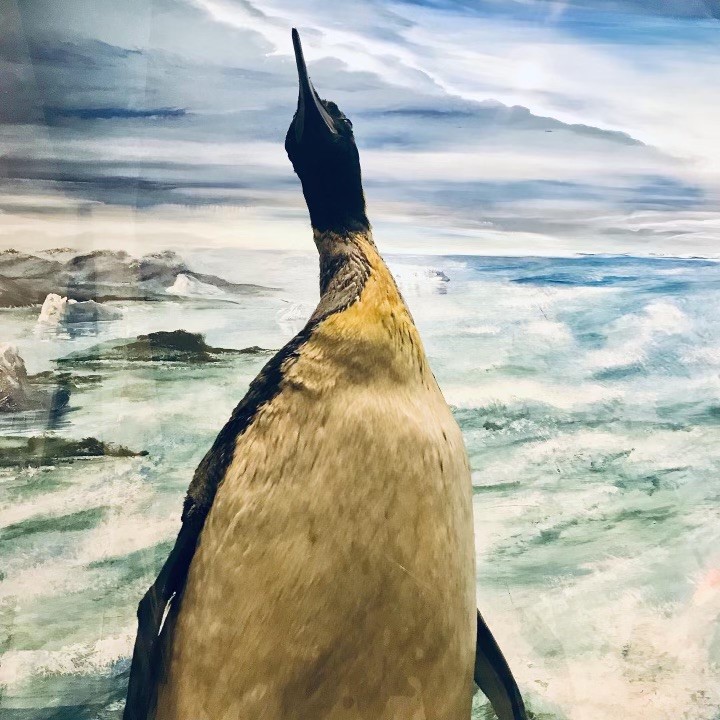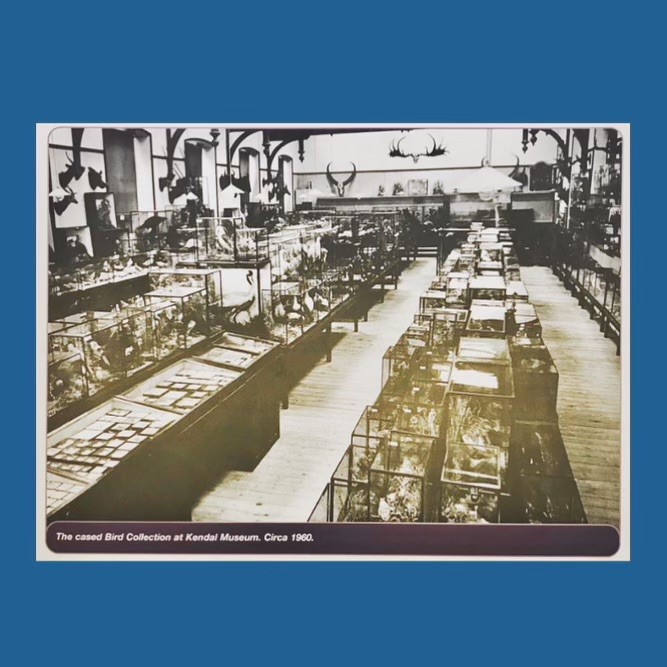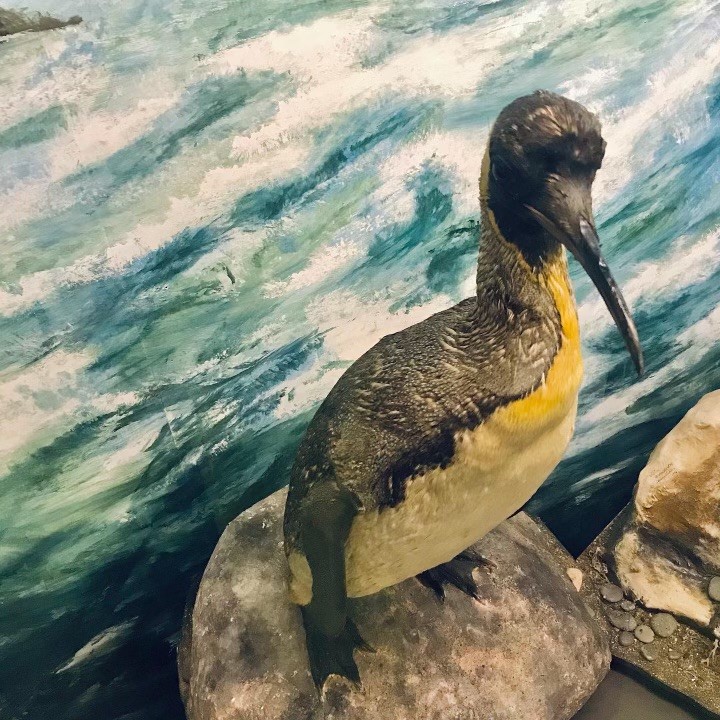
Our King Penguin specimen was part of the original natural history collection at Kendal Museum, and was donated by Dr William Rushton Parker (1853–1943).

Dr William Rushton Parker; Kendal’s Great Benefactor
Dr Parker was a Museum supporter with a particular interest in the collection of Birds, not only from this country but from Europe, Africa and South America.
He donated specimens to the museum that were bought already mounted, and then cased by Murray, the Taxidermists at Carnforth. In all he purchased over 700 birds and also 30 animals.
Early life and professional education
Born in 1853, William Ruthton Parker was the second son of a well known Liverpool Physician.
At the age of eight years, he was sent to the Royal Medical Benevolent school, Epsom, Surrey(now known as Epsom College). The school had a Natural History Society and the boys were encouraged to collect moths, butterflies, bird eggs and to stuff animals. The school museum was full of specimens sent by “Old Boys” from all over the Empire.
He continued his education at Gonville Caius College Cambridge and at University College, faculty of medicine London. Coming to Kendal, Rushton Parker became a surgeon at Memorial Hospital (forerunner of the Westmorland General Hospital), and had a large G.P. Practice in Maude Street (Now the James Cochrane Practice). He lived at 116 Stricklandgate.
Retirement and donation
Retiring in 1919 at the age of 66, he went to London, where he spent much of his time in the library of the Royal Institution of Gt. Britain.
He became a Fellow of the Geological Society, the Royal Geographical Society, the Royal London Zoological Society and the Linnean Society. From London he sent many specimens to the museum.
King Penguins

King penguins are the second largest of the penguin species (after the Emperor penguin), on average they are around 15kg (33lb) and 95cm (3.1ft) high.
Like many penguins, fully grown but unfledged chicks can appear to be larger than the adult birds. They were sometimes known as “woolly penguins” by the early explorers and sealers as the thick brown down of the juveniles looks like wool on sheep. Some even thought they were a separate species, an impression strengthened by their complex breeding season meaning there are almost always some chicks around at all times of the year.
King penguins have colourful feathers around their necks and heads, this makes them the brightest of all the species of penguin, there is an estimated world population of 2 million breeding pairs with some estimates up to 3.2 million.
Major colonies are found on Crozet, Prince Edward Island, Kerguelen Island, Heard Island, South Georgia and Macquarie Island.
King penguins are currently not influenced by any fishery as they themselves are not taken and their prey is not currently taken commercially, so industrial fishing is not affecting their numbers.
Come and explore the Kendal & Westmorland and World Wildlife Galleries at Kendal Museum and learn more about our wildlife.

